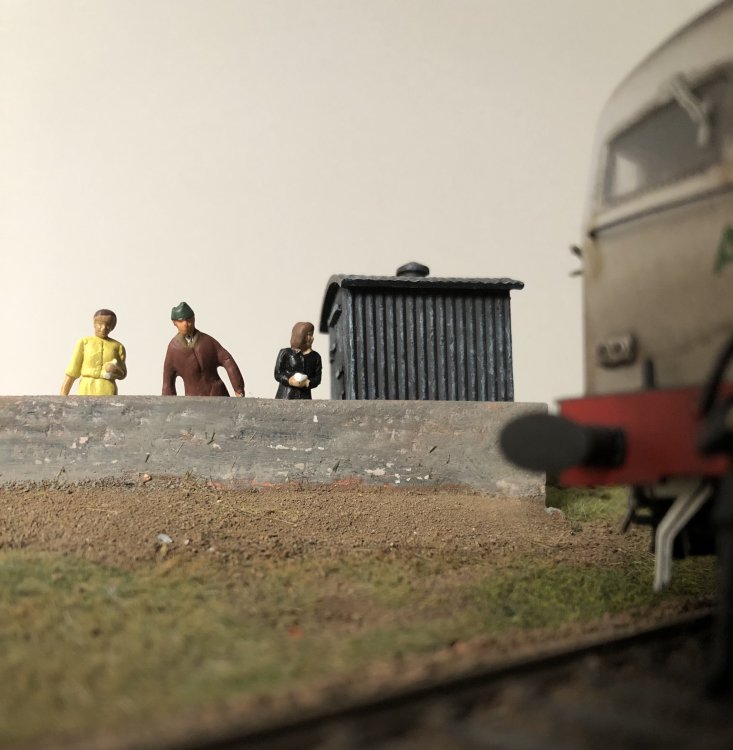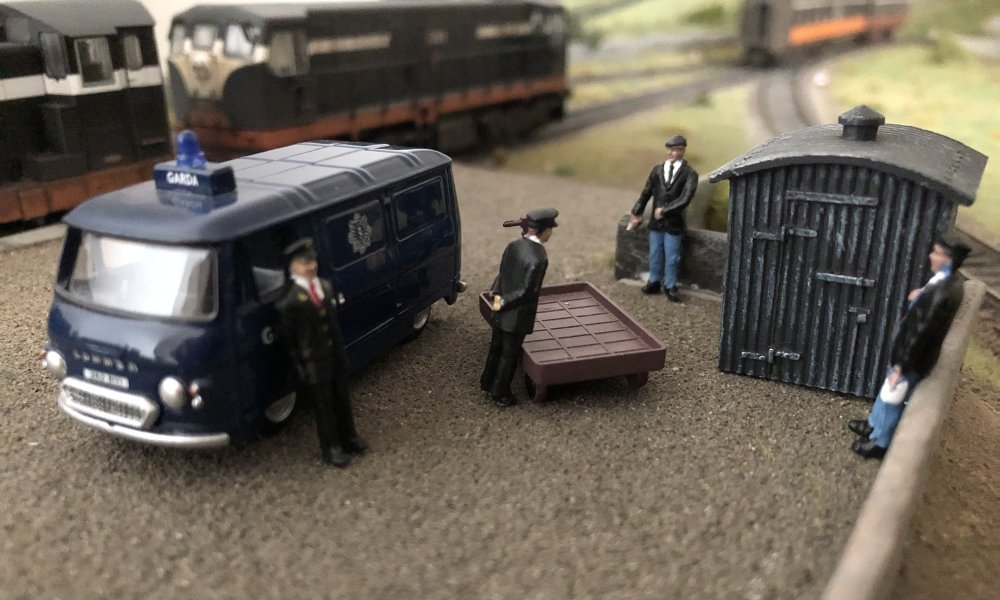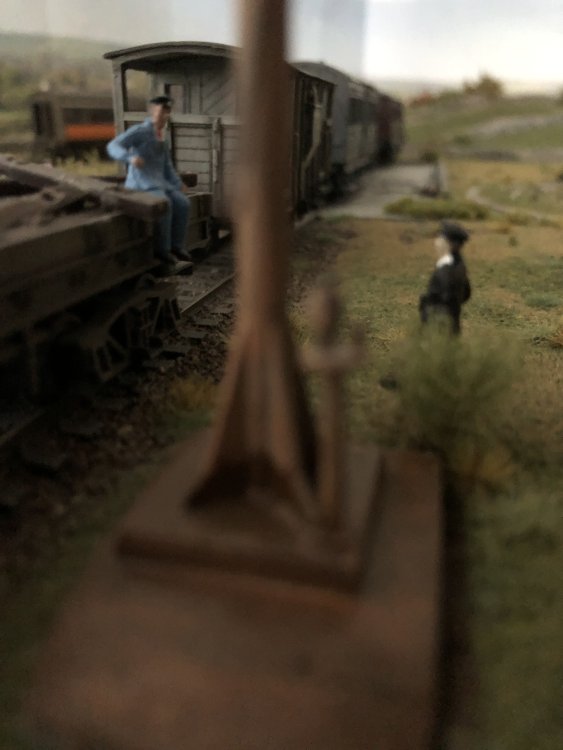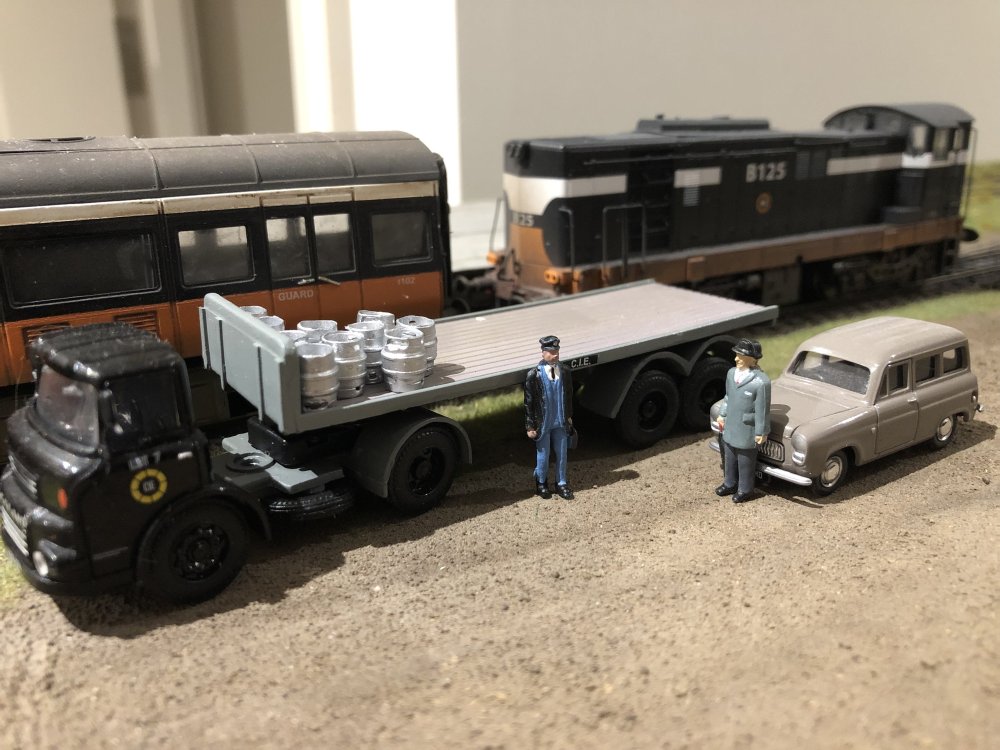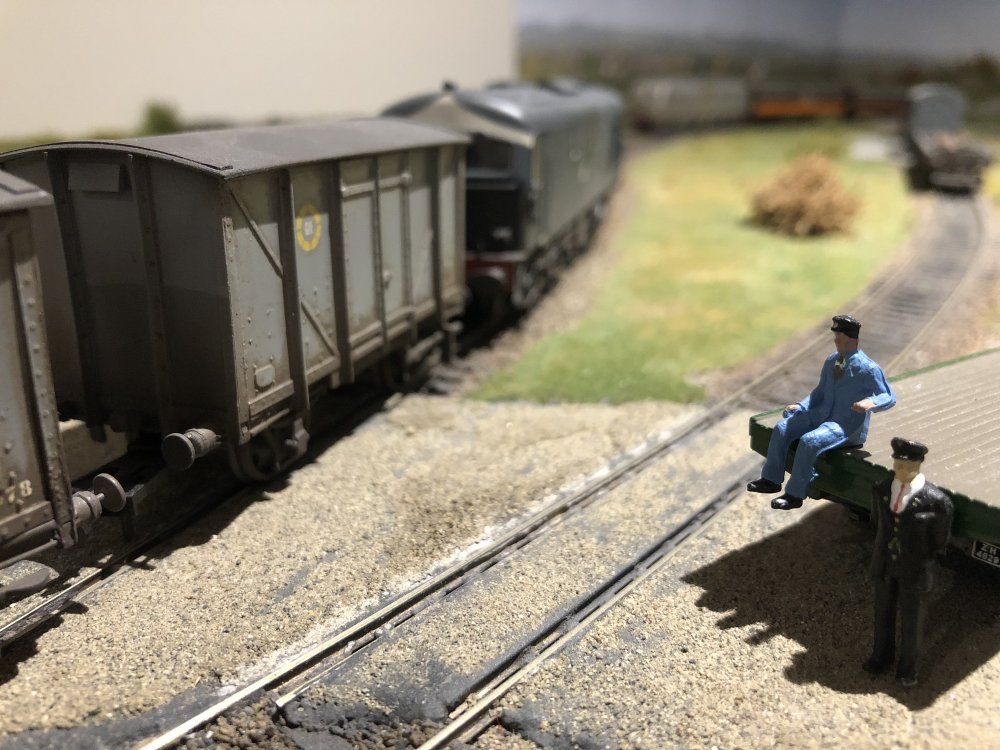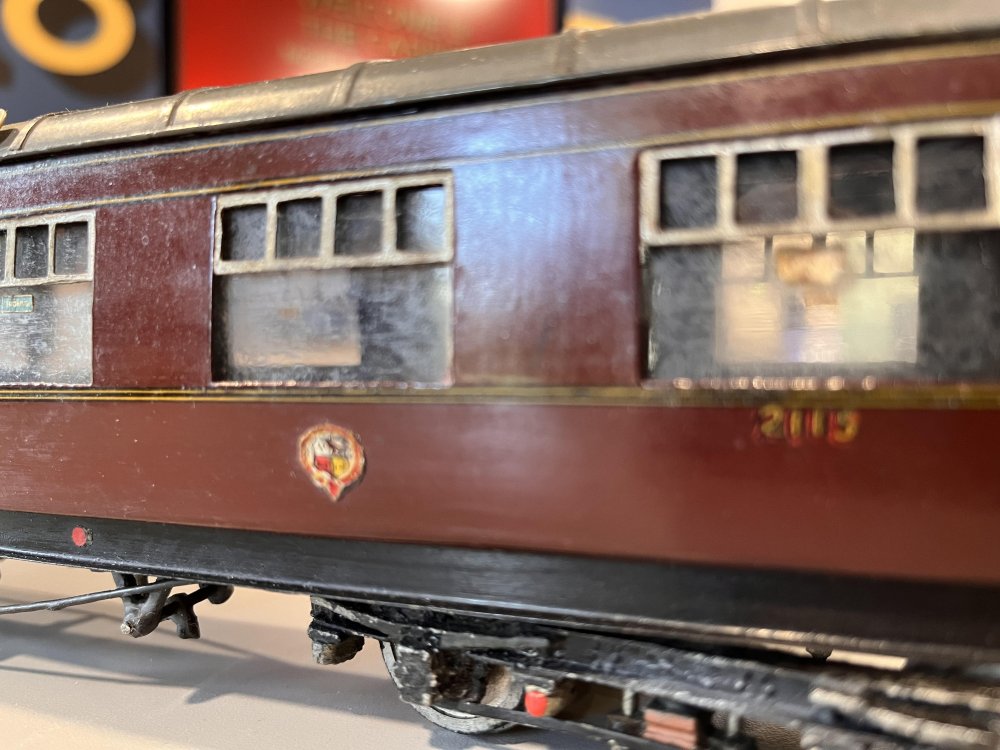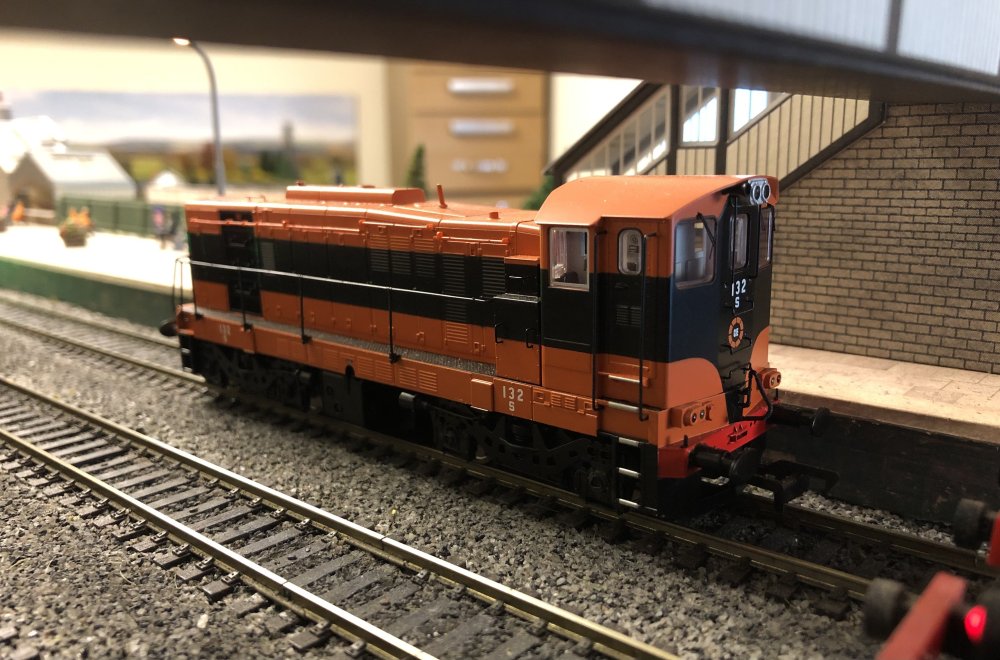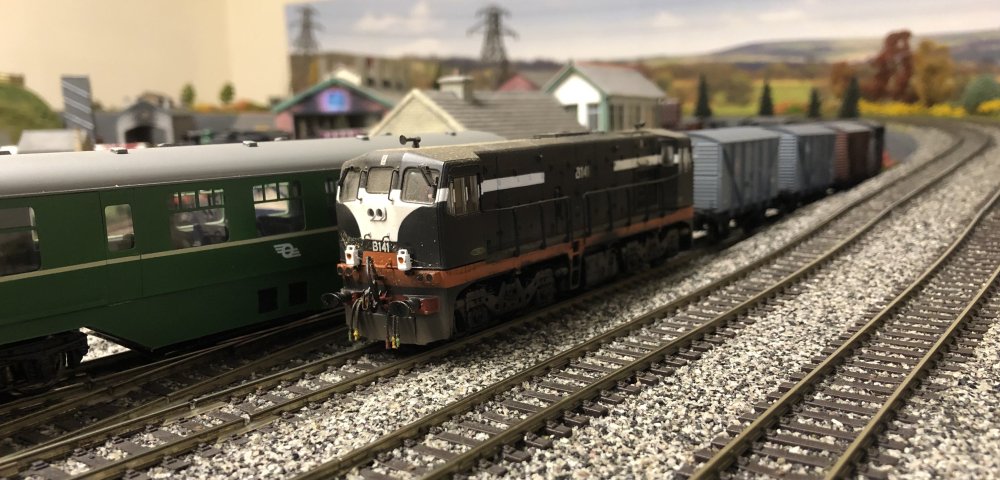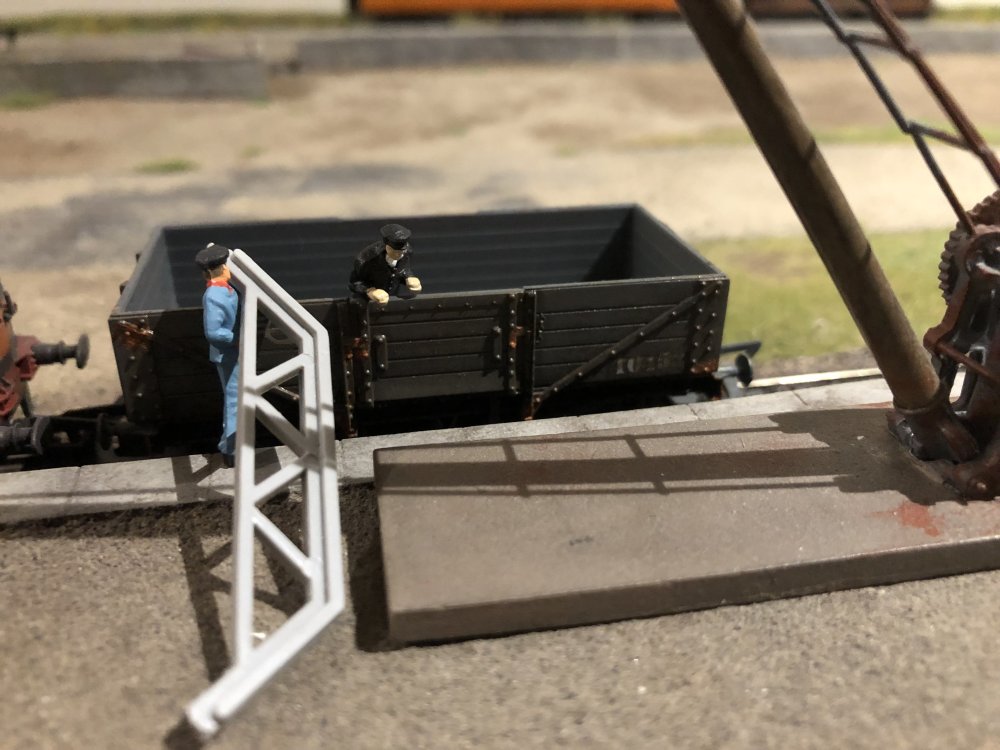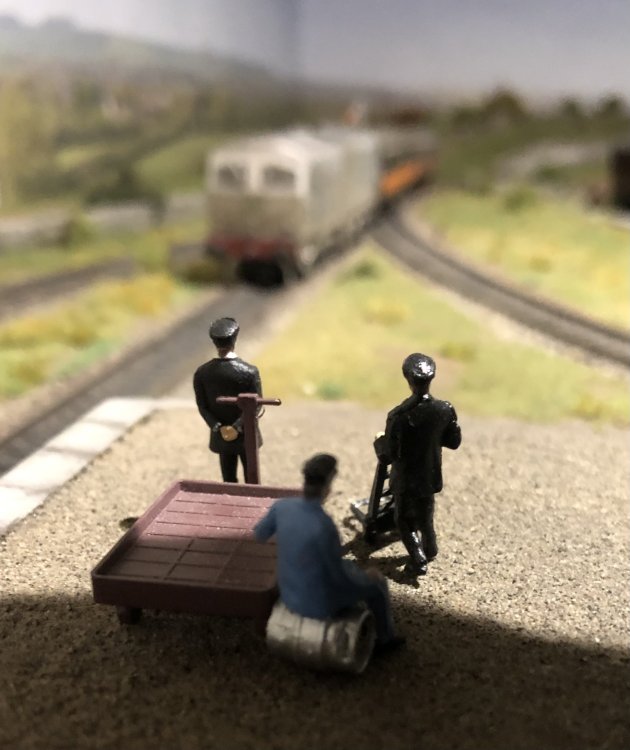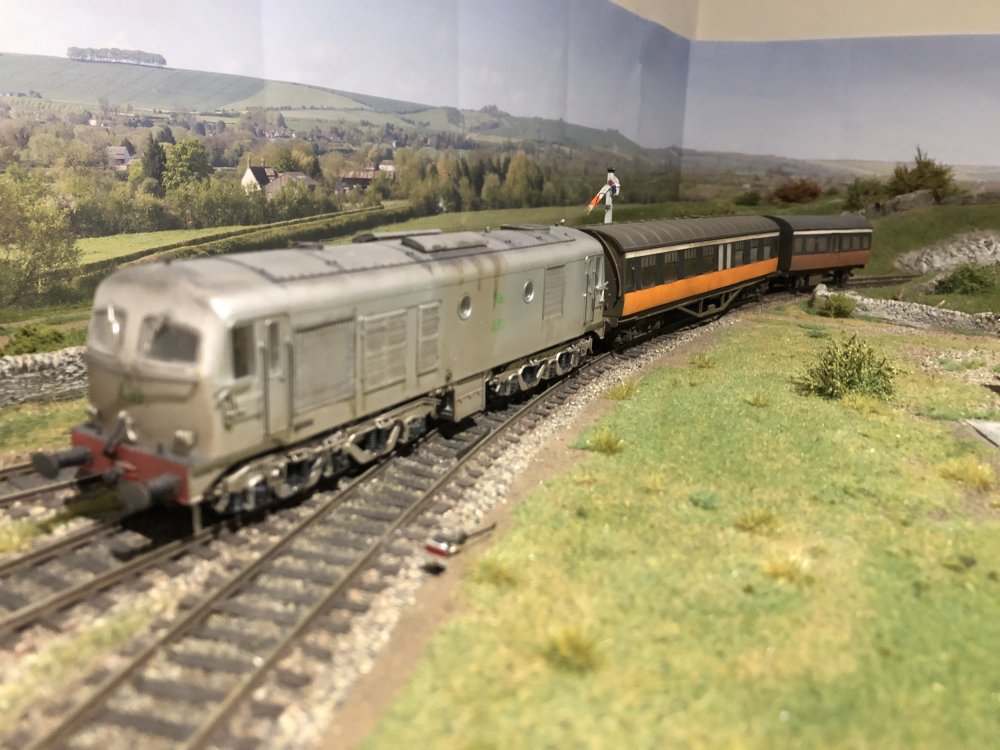-
Posts
15,857 -
Joined
-
Last visited
-
Days Won
393
Content Type
Profiles
Forums
Events
Gallery
Everything posted by jhb171achill
-
It can run alongside ICRs even, on a modern image layout using RPSI livery Cravens, on RPSI specials….. Once the very essential AEC railcar is available RTR, a “Jeep” will provide the necessary accompaniment for a UTA-era layout, now only possible - and even then to a limited extent - with kits and scratch-builds. A much neglected part of our railway history would then be covered.
-
184 would need a complete rebuild; most of it is worn out way beyond the point of being restorable, and will thus remain an exhibit at Whitehead. However, the economics of preserved railways in Ireland - even in Downpatrick, never mind very remote places like Maam X (or, for that matter, Moyasta or Finntown) are such that operation of a steam loco any bigger than a sugar company O&K, are light years beyond uneconomic. To light up a loco like a J15 alone eats several hundred euros worth of coal, unfortunately. Despite the resources behind Maam X, it is economically more sensible to operate as, perhaps, a narrow gauge line. In addition, well-insured covered accommodation, complete with coaling & watering facilities and inspection pit, as well as reasonably equipped workshop facilities, would have to be provided in advance, before a steam locomotive of any type could be brought in. Dealing with Downpatrick’s finances for some 11 years tends to be just as sharp a learning curve as a longer period doing the same for the RPSI!
-
Irish Railway News ‘Enterprise Watch’
jhb171achill replied to IrishTrainScenes's topic in General Chat
8208 on Enterprise this morning, with 8209 spare outside Connolly shed - it was zebra 231 two days ago. -
You’ve one o’them wireless things?
-
Totally agree. This is Ireland's only operational 5ft 3 line, and it has a unique and fascinating collection. I, too, would urge all who can to donate to their disaster fund and / or go up there and assist in person if possible.
-
“What’s wrong with that train?” “It’s come off the track. Look at the front wheels. Those men are fixing it”. ”But how can four of them make a big train get back on the rail?” “Ye see, guard, there’s no-one here after seven in the evening. The door’s been crow barred open. Second time since August” ”What’s missing?” ”Ah, shovels, crowbars, lamps…. probably Timmy’s bottles o’holy water, but sure ye know that!” ”I’ll pretend I didn’t hear that! Nice stuff, though, he got me a bottle too…”
-
“The Council’s building seventeen of them, two bedrooms each. They’ve all got inside lavatories, the lot, like in Dublin…AND a gas cooker!” ”That’ll take up that whole field. I heard that the Dalys got a hundred pounds for it from the council….” “John says the re-railing ramps are in the old lamp store somewhere but I couldn’t find them….” ”They’re in the lifting van in the yard. We need this on the road by six…”
-
Perfect for this setting. When compiling “Rails Through North Kerry”, I recall looking through some of Barry Carse’s images of mail trains. Going back to Senior’s time, the mails were by far THE most important traffic, with the main line ones also carrying large numbers of passengers. Senior recalled seeing the down Cork mail leaving Kingsbridge with over fifteen bogies and a handful of six-wheelers for good measure. By the “black’n’tan” era thus had dwindled to irrelevance in terms of passenger accommodation, and latterly had none. This scene at Gort evokes those last days, and some of Barry’s photographs show this very thing - two bogie vehicles. I personally recall seeing a mail train about forty years ago - dunno where it was going - with just a TPO & BR van. I travelled on an up night mail from Sligo to Westland Row twice a decade before that. From memory, one had an old side-corridor brake standard or early CIE origin; whatever way it had been converted it rebuilt it only had two compartments. One contained a woman who got out at the first stop, Collooney; me in the other. I was the solitary passenger the whole way back to Dublin. Other than that, two TPOs and a tin van, I think. At Athlone you had to change. This time, two TPOs and a BSGSV. No other passengers, as we rolled home through the dark, via Mullingar of course. I’ve a recollection of seeing a mail train somewhere else with three or four tin vans in a row, and a couple of bogies of some sort. You just never could tell what would turn up on a mail train…..
-
Irish Railway News ‘Enterprise Watch’
jhb171achill replied to IrishTrainScenes's topic in General Chat
I was even MORE surprised when I DID see one this morning in Malahide - and it was on time, AND it wasn’t a railcar! -
There were differences in chassis and bogies, yes. Mayner’s post above pretty much summarises it, but when I post a few pics that should help too. The earlier (up to 1953) CIE stock had basically the same type of chassis and bogies as Bredins; later ones had bogies more like those in Park Royals. The chassis looked different too, though I would not be well up on the actual specification.
-
The GSR-built stock were all several varieties of “Bredins”, with two distinct side profiles, the earlier ones being straighter sides. There was nothing built in the 1940s, so the 800s and so on were hauling trains of “modern” Bredins plus older wooden stock (of low and high roof types, plus an occasional clerestorey, and even the odd six-wheeled full brake). The CIE stock built in 1951-3 was broadly similar to the Bredins, but solid timber frames rather than laminated. Then came the Park Royals in 1955/6, followed by the ACTUAL laminates, in their several batches and configurations, and the 24XX series dining cars. All of the above bar the Park Royals bore the same overall family resemblance to the Bredins. Later, many of the 1951-3 wooden-framed vehicles were rebuilt, for example as BSGSVs. Even among enthusiasts, everything of that era tends also to be referred to generically as “laminates”, even though the framework of the bodies was solid timber rather than laminated; but of course you can’t tell that externally! I’ll post a few pics later of different types.
-
Now THERE’s an idea!
-
“....Well, it went to court in Killarney. He was awarded fifty pounds, which isn’t bad…. away and stick the kettle on an’ then we’ll deliver these.….”
-
“You should’ve seen his face. Haunted, we told him. He went back to Castletown and told Mick he didn’t want to come down here agin… he’s on the Tralee goods ever since…”
-
Here’s another. Lighting shows it more accurately here - looks a bit brownish in the first shot. This is of course one of Cyril Fry’s models, a Bredin coach.
-
Just gauging interest! If they DO go ahead with this, it will be several years before they're ready. If they want more than one livery in a re-run, I've sent them GSWR, early GSR and late GSR. Late GSR (post-1933) would probably be the most popular. This is GSR livery as seen after the early 1930s....
-
-
Absolutely outstanding stuff!
-
That is absolutely awful. Hope the fund raiser goes well - folks, let's all donate!
-
Superb stuff and a lovely tribute. Your dad would be very proud of that.
- 11 replies
-
- 4
-

-

-
What Scale Do You Model Irish Railways In?
jhb171achill replied to DJ Dangerous's topic in General Chat
12” to the foot scale? -
“We’ll have to just manhandle it in. No wonder the crane’s seized - PJ says he never saw anyone oil it at all, and he’s here since 1944…” “Not too many of them still in silver….gets very dirty, doesn’t it….” ”That’s Pat driving today. It’ll be a lively run back….. his da still isn’t well, y’know….”
-
At Attymon Junction there was a ghost. It was said that a local girl went there after arranging to meet a man she intended to elope with. When he didn’t turn up she threw herself in front of a train. She evidently haunts the place to this day. A former signalman from there, who I know, claims to have seen her not once but twice. This casualty is, though, strangely absent from any MGWR, GSR or CIE records….. Just months after the Co Donegal had been lifted, a gatekeeper who still lived in a gatehouse somewhere on the Killybegs line heard a whistle one night. He went outside and saw a ghost train passing through the gateless, trackless crossing…. In Tuam loco shed, there was s poltergeist who moved things about. You would set something down and when you came back it had been moved somewhere else.
-
I’ll just add a wheel to my post!
-
USES FOR SIX-WHEELERS IN THE DIESEL ERA As most will be aware, 6-wheelers lasted in day to day use here for decades longer than in the neighbouring island. Mass dieselisation, however, kicked off here to a greater extent, earlier than in Britain. Therefore, while six-wheelers would never have been seen in Britain being trailed round by class 47s, or tacked onto the back of a Metro-Cammell railcar set (sorry, “DMU” in brexitese), such was commonplace here; see numerous pictures of brand new A & C class diesels hauling a rake of 1890s six-wheelers to Youghal, Valentia Harbour, or in Wisht Caark. So, what goes with what? To start, where were 5-wheelers actually seen in passenger-carrying use? Until around 1900, all the railways of Ireland overwhelmingly used 6-wheelers, usually 30ft, but as short as 27ft (CBSCR) or as long as 37ft (BCDR). Bogies started taking over then, and by the mid 1920s, while six-wheelers greatly outnumbered them, they had made considerable inroads into main line trains. By the start of the CIE era, most main line services had bogies, but very large stocks of 6-wheelers remained. The first wave of mass dieselisation was the AEC railcars which would populate the GNR and CIE in 1950 and 1953 onwards. There is photographic evidence of ancient six-wheelers tagged onto the end of these. Offhand, I can think of photos taken on the Harcourt St line if a 3-car AEC towing a MGWR 3rd of 1890s origin, and a similar scene of a 4-car towing a similar vehicle on the South Kerry. With Albert Quay retaining some very old six-wheelers to the end, it’s highly probable thus happened on the CBSCR too. As we’re aware, prior to the advent in 1972 of the Mk 2 sets, almost every passenger train going way back, was a mixture of all sorts of carriage types. As far as 6-wheeler stock was concerned, this resulted in a possibility of these appearing in trains otherwise made up of bogies, or even complete 6-wheeled sets, on any branch or secondary service, and on Cork and DSER suburban traffic; also DSER and Youghal summer excursions. After the delivery of the A & C classes in the mid-50s, this would have resulted in six-wheelers being hauled by these diesels right up to the demise of the last of them in 1963. Thus, silver or green A & C classes are suitable DIESEL haulage for them, as are AEC railcar sets. And, of course, these diesels plus the 6-wheelers rubbed shoulders in (typically) mixed rakes with (new) Park Royals and laminates, and older Bredins and wooden bogies. While main line loco-hauled trains by the diesel era rarely saw them, busy days saw exceptions. I’ve seen a picture of a train somewhere near Hazelhatch, I think, steam hauled about 1957/8, with old wooden bogies and at least one 6-wheeler. All of the above relates to passenger carrying 6-wheelers. Full vans, however, were another matter. In addition to the above, these were very much to be seen on main lines as well, right into the dawn of the black’n’tan era. After the entire remaining fleet of passenger-carrying ones were withdrawn in 1963, about half a dozen full vans survived. Several, as followers of the Hattons thread will know, even managed to gain the black’n’tan livery (no passenger ones ever did). Despite passenger-carrying ones having become rare on main lines in the 50s, these last few vans ironically ended their days on main line trains, carrying mailbags usually. About three were still on the books up to 1969/70, but the latest photographic evidence I’ve seen is an old GSWR 6-wheeler full brake tagged onto an up Galway mail hauled by a B121 as late as 1968. So, in summary; a modeller could mix and match them with absolutely anything ancient or modern until the end ifvthe grey’n’green era, and steam, in 1963. The full van version, either in later (light green) livery or black tan, can be added onto a train right up to 1970. Suitable diesel haulage, then: Passenger-carrying: steam, silver or green A or C; and theoretically a brand-new grey B121. Non passenger (full van): the above, plus B141/181 in black or black’n’tan. When the first locos were repainted in “Supertrain” livery in 1972, the very last two six-wheeled vans had been out of use some three or four years. The Hattons range are very close indeed to GSWR design. However, by some quirk, in later days (early 1960s), the vast majority of passenger-carrying ones were of MGWR origin (very different) while the majority of old full vans were ex-GSWR.
.png.c363cdf5c3fb7955cd92a55eb6dbbae0.png)



